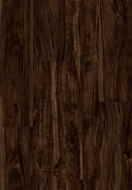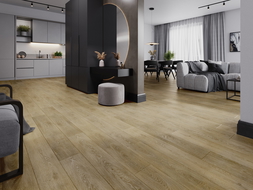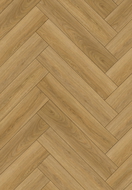
Choosing the best underlay for panels is key, not least due to the durability of the floor, its comfort of use, and its thermal or acoustic insulation ability of the floor.
Underlay thickness should be matched to the type of panels, the type of subfloor or the intensity of use. That's why we have prepared a practical guide to help you choose the underlay material and decide which underlay for panels on uneven floors will be best. You'll find answers to the most important questions in this material!
What will you learn from this article?
It's time to admit that choosing the right underlay for panels is not difficult. In the article, you will find answers to questions:
-
What is the importance of the underlay thickness?
-
What underlay for panels on underfloor heating will ensure maximum thermal efficiency?
-
What are the most common mistakes when laying underlay for panels?
-
How does the underlay affect the durability and comfort of using the floor?
Thanks to this, you will make a decision that translates into the comfort and longevity of your floor.
Underlay thickness matters — learn the most important aspects
Do you know that well-chosen underlay for panels impacts the extension of the floor's lifespan and improves comfort of its use? Unfortunately, with greater thickness, an excessive layer of underlay may lead to reduced energy efficiency of underfloor heating or negatively affect the stability of the subfloor.
Before making a final decision to purchase an underlay for panels, analyze the thicknesses of individual layers of the floor. Consider, what size of panels and underlay for panels will be appropriate for the conditions prevailing in your home.
What thickness of underlay for panels will be the best?
Experts recommend that quartz underlay for panels have from 1.5 mm to 5 mm thickness. In some cases, excessive thickness of the underlay for panels may negatively affect the efficiency of the heating system. To avoid technical problems, it is worth thoroughly analyzing the parameters of the selected underlay for panels before purchase, especially its thermal resistance, thickness, and permissible application.
No underlay, no go — vinyl floors
For vinyl floors and self-leveling screed it is worth considering underlays with a thickness of about 1.5 mm. An example is Mexen branded panels, that have an integrated IXPE underlay. Thanks to this vinyl panels can be installed immediately after purchase.
By choosing this type of panel, you streamline the work involved with laying the floor in a room at home or in an apartment. At the same time, you gain a guarantee of excellent sound dampening and the resistance of vinyl panels to water in case of high humidity.
What underlay to choose for laminated panels?
A different type of underlay will work for classic laminated panels. An underlay with a thickness of 2 mm to 3 mm will be ideal here. Such a maximum height of underlay for panels provides good acoustic insulation, increases durability, and ensures protection during intensive use.
Thickness of floor panels with underlay
Standard laminated panels typically have a thickness of 6 to 10 mm, while in the case of vinyl panels like SPC panels, the thickness ranges from 4 to 6 mm. In some cases, models can be even 12 mm.
What is important – many SPC panels, which are durable, already have the underlay integrated with them. Therefore, the total height of the panel is about 6–6.5 mm, which is useful, for example, when planning door or threshold heights for a given room.

Types of underlays for panels — which to choose?
The market offers various types of underlays, tailored to the technical properties of rooms or user preferences. Additionally, choosing the right parameters affects the comfort of living for the household members and the overall quality of use.
The most commonly used include:
-
IXPE underlay — made of polyethylene foam — integrated with Mexen SPC panels. It is the thinnest, flexible, waterproof, and excellent at sound dampening. Furthermore, it is suitable for rooms that have more frequent contact with water than other places and for use with underfloor heating.
-
XPS underlay from extruded polystyrene – the 3 or 5 mm underlay for panels is suitable for classic laminate panels. It stands out for its lightness, good insulating properties, and leveling of point floor unevenness. It's a popular model for bedrooms or living rooms.
-
Aluminium underlay – characterized by low thermal resistance. It's an ideal choice for underfloor heating in homes where heating efficiency is significant.
What underlay for panels with underfloor heating?
If you plan to install panels with underfloor heating, choosing the right underlay is crucial for the efficiency of the entire heating system.
A poorly chosen high-density underlay can act as an insulator — blocking the flowing heat and reducing thermal comfort in the room. In such cases, underlays with low thermal resistance are best, as they effectively conduct heat from the heating installation to the floor surface.
A good practice is choosing aluminium mats for floor panels or a thin polyurethane-mineral underlay. They work well with both water and electric heating. Their structure provides not only adequate thermal conductivity but also sound dampening and compression resistance.
When selecting an underlay, consider not only the thickness but also the declared thermal resistance by the manufacturer and the intended use of the material. This way, you'll ensure that the underfloor heating will function efficiently for years.
What mistakes to avoid when choosing an underlay for panels?
One of the most common mistakes when choosing an underlay is its thickness. It may seem that a thicker underlay will increase the comfort of the floor. Nothing could be further from the truth.
Firstly, such a solution does not provide stability but may worsen the panel lock connections, and expose the floor to mechanical damage and ultimately lead to faster material wear.
A second important aspect is ignoring the type of substrate and floor unevenness. Before creating an underlay layer on a concrete screed, it is necessary to appropriately prepare and secure it. This is especially important on the ground floor or in buildings without heating. The underlay must be well-matched to the type of rooms.
Will one underlay for panels work everywhere?
It's worth knowing that there is no single, universal solution. Especially as different types of underlay will work in the case of underfloor heating, in a children's room, or when we want to arrange a bathroom or kitchen.
When choosing panels for the kitchen or bathroom, it is worth paying attention to panels with IXPE underlay. Especially since they are waterproof and very intuitive when it comes to panel installation.
Good quality underlay is waiting for you!
When thinking about the best choice of underlay, consider not just the price. Pay attention to quality, application, and the recommendations of the floor panel manufacturers.
























